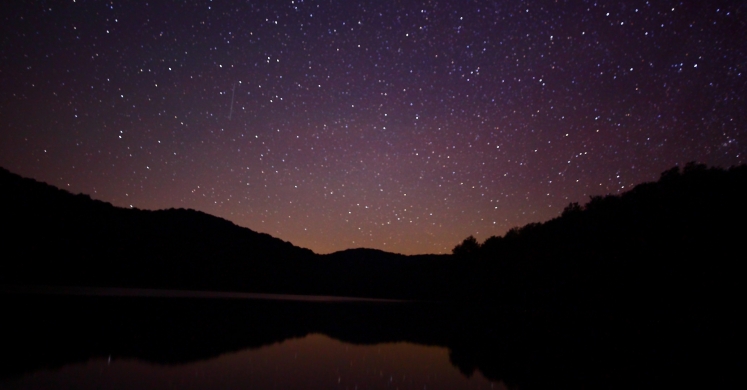Blog

#bioPGH Blog: More Than Just The Night Sky
 A resource of Biophilia: Pittsburgh, #bioPGH is a weekly blog and social media series that aims to encourage both children and adults to reconnect with nature and enjoy what each of our distinctive seasons has to offer.
A resource of Biophilia: Pittsburgh, #bioPGH is a weekly blog and social media series that aims to encourage both children and adults to reconnect with nature and enjoy what each of our distinctive seasons has to offer.
If you have a few spare moments tonight, step outside and look up into the night sky. For as long as stories have been told, the night sky has captivated us. The stars have been incorporated into romances, adventures, and tragedies—capturing our imaginations in a way that few other natural phenomena ever have. Beyond the realm of the fantastic, though, the night sky has also been quite useful. Many cultures built their calendars on the heavens, measuring time itself against the sun or the moon; and explorers learned to navigate by the stars’ seasonal constancy. Are we humans the only ones who have learned to use the romanticized night sky, though? Excitingly enough, we are not!
In 1957, H.O. Wagner and Franz Sauer, of the Universität Freiburg (University of Freiburg) in Germany, published the first documented evidence of birds possibly using the stars to navigate. Though their early landmark paper was built on very small sample sizes and findings that were still open to interpretation, they set an intriguing foundation for future work. The next several decades brought rounds of planetarium studies, demonstrating that birds could orient themselves directionally by the positioning of stars. Many other exciting questions arose from this, of course, beginning with how are birds orienting themselves? Do birds recognize constellations? Is that recognition learned or innate? Can birds recognize their actual geographic position based on stars? Ornithologists (bird researchers) continue to try answering these questions today! Work with pied flycatchers, blackcaps, and indigo buntings (native to PA) suggests they learned to identify direction based the positions of star patterns—independent of the rotation of the night sky. Recent work in European robins has also indicated that the night sky must learned very early on, and they can learn either true constellations or invented ones.
Thinking of the night sky, some animals can also use moonlight to direct their movement—examples including hatchling sea turtles looking for the ocean and African dung beetles who are guided by polarized moonlight. Of course, animals have many other ways of navigating (magnetic field, physical landmarks, chemosensory cues, etc.) and they often use multiple methods in combination. Using the stars to navigate, though, intrigues us because it seems so “human,” yet nature itself can do many wondrous things!
Connecting to the Outdoors Tip: With its long nights, winter is a good time for star-gazing, and there are a number of wintry night sky wonders to observe. Venus is a bright evening star, clearly visible from twilight in the southwest. If you’re up for a bit more of a challenge with a telescope or even a good pair of binoculars, this month you should be able to see an asteroid called Vesta that orbits our Sun over the course of roughly 3.6 years. To locate Vesta, look between the two stars Castor and Pollux of the constellation Gemini; they will be bright twin stars overhead at night.
Continue the Conversation: Share your nature discoveries with our community by posting to Twitter and Instagram with hashtag #bioPGH, and R.S.V.P. to attend our next Biophilia: Pittsburgh meeting.
Resources
Emlen 1975: The Stellar-Orientation System of a Migratory Bird
Chernetsov 2015: Avian Compass Systems: Do All Migratory Species Possess All Three?
Michalik et al 2014: Star Compass learning: How Long Does it Take?
NASA: Full View of Asteroid Vesta
Biological Journal of the Linnean Society: The Evolution of Avian Migration
Sea Turtle Conservancy: Artificial Lighting
National Geographic News: Dung Beetles Navigate by the Moon, Study Says
Select Photos © Vaido Otsar CC-BY-SA-3.0 and Forest Wander CC-BY-SA-3.0

